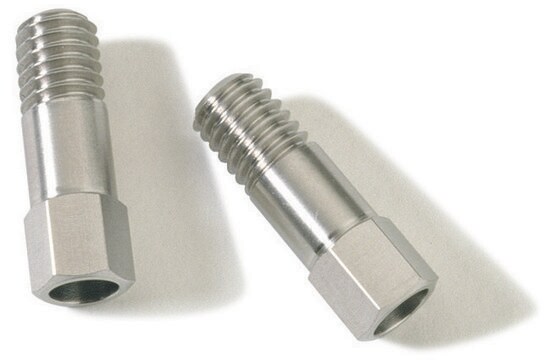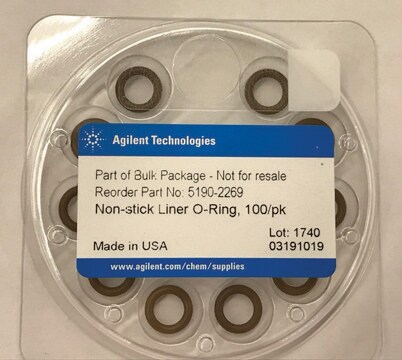28034-U
Capillary Column Nut (fits Agilent [MS detector] and PerkinElmer®), hexagonal wrenchtight version
pkg of 5 ea
About This Item
Recommended Products
packaging
pkg of 5 ea
General description
Legal Information
Storage Class Code
11 - Combustible Solids
WGK
WGK 3
Flash Point(F)
Not applicable
Flash Point(C)
Not applicable
Choose from one of the most recent versions:
Certificates of Analysis (COA)
Sorry, we don't have COAs for this product available online at this time.
If you need assistance, please contact Customer Support.
Already Own This Product?
Find documentation for the products that you have recently purchased in the Document Library.
Articles
A procedure for cleanup of green tea extracts provides low background and allowed for the analysis of more pesticides at lower levels than QuEChERS. Uses less solvents and no toluene.
The odor and pungency of ginger is due to the presence of terpenes, gingerols and shogaols. These compounds contribute to the highly complex matrix of ginger, which subsequently presents a challenge in low level analyses of contaminants. A novel 2-layer SPE cartridge efficiently reduces background for pesticide determination.
Cannabis testing regulations include analysis of purity, potency, and contaminants. Learn more about analysis of cannabis for pesticides, mycotoxins, and pyrethrins registered in California by LC-MS/MS and GC-MS/MS Using Ascentis® Express Biphenyl and SLB®-5ms Columns
Protocols
Paprika is a spice made from dried sweet peppers, and is used for flavor and color in many types of cuisine. Contamination with polynuclear aromatic hydrocarbons (PAHs) can occur when pepper plants are exposed to these pollutants in the environment and/or during the drying process.
Our team of scientists has experience in all areas of research including Life Science, Material Science, Chemical Synthesis, Chromatography, Analytical and many others.
Contact Technical Service








